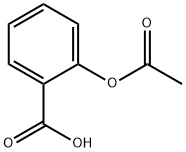6-Acetamidohexanoic acid
- CAS NO.:57-08-9
- Empirical Formula: C8H15NO3
- Molecular Weight: 173.21
- MDL number: MFCD00004424
- EINECS: 200-310-8
- SAFETY DATA SHEET (SDS)
- Update Date: 2025-12-26 12:07:08

What is 6-Acetamidohexanoic acid?
Chemical properties
WHITE POWDER
Originator
Acexamic acid ,Flamma
The Uses of 6-Acetamidohexanoic acid
6-Acetamidohexanoic acid is used after oral administration of an antiulcer agent, zinc acexamate (ZAC) for treatment of gastric ulcer or small bowel inflammation.
The Uses of 6-Acetamidohexanoic acid
wound healing agent
Definition
ChEBI: Acexamic acid is a medium-chain fatty acid.
Manufacturing Process
400 L of demineralized water, 5.0 kg of calcium hydroxide, and 155.0 kg
(1000 moles) of acetyl-caprolactame are introduced under stirring and at a
temperature of about 25°C into a 1000 L stainless double walled reactor.
The temperature is raised to 30°C. 75.0 kg of calcium hydroxide are
introduced stepwise in the form of successive amounts of 2.0 kg each in the
medium, under stirring and at a temperature adjusted and maintained 25°-
30°C through external cooling, in a manner such that the time required to
introduce into the reactor the whole amount of calcium hydroxide
approximates 1.5 h. When the stirring is stopped, the pH is about 7.5-7.8.
The obtained mixture is stirred continuously at a temperature of 30°C during
14 h. At the end of this operation the pH is again adjusted at a value 7.5-7.8.
The hydrolysate is filtered on a 60 x 60 pressfilter comprising 6 compartments
and equipped with fabrics of the polyester known under the designation
TERGAL which have been previously coated with a suspension of a cellulose
commercialized under the trademark SOLKA FLOX BW20. The duration of
filtration is of 1.5 h. 580 L of the filtrate are recovered and subjected to a
concentration under reduced pressure in an evaporator the volume of which is
of 750 L, at a distillation temperature ranging from 45°-50°C under a reduced
pressure of 10-15 Torr.
The operation is ran until concentration of the solution to 280 L, the
concentrated solution being then left standing. The crystallisation is already
considerable 2 h after the end of the operation of concentration.
Crystallisation is ended after 16-24 h.
The crystals are centrifuged at a speed of 700 revolutions/minute. The
centrifuged crystals of calcium acexamate are washed twice on the centrifuge
with 20 l of acetone. 107.0 kg of crystals are obtained, which are dried under
vacuum at 40°C. The 96.0 kg of dry calcium acexamate obtained are ground
and sifted.
Acexamic acid may be produced by treatment of the calcium acexamate with
HCl.
Therapeutic Function
Antifibrinolytic
Properties of 6-Acetamidohexanoic acid
| Melting point: | 102-104 °C(lit.) |
| Boiling point: | 303.86°C (rough estimate) |
| Density | 1.1599 (rough estimate) |
| refractive index | 1.4590 (estimate) |
| storage temp. | Sealed in dry,Room Temperature |
| solubility | DMSO (Sparingly), Methanol (Slightly) |
| pka | 4.75±0.10(Predicted) |
| form | Solid |
| color | White to Off-White |
| Merck | 14,45 |
| CAS DataBase Reference | 57-08-9(CAS DataBase Reference) |
Safety information for 6-Acetamidohexanoic acid
| Signal word | Warning |
| Pictogram(s) |
 Exclamation Mark Irritant GHS07 |
| GHS Hazard Statements |
H317:Sensitisation, Skin H319:Serious eye damage/eye irritation |
| Precautionary Statement Codes |
P280:Wear protective gloves/protective clothing/eye protection/face protection. P305+P351+P338:IF IN EYES: Rinse cautiously with water for several minutes. Remove contact lenses, if present and easy to do. Continuerinsing. |
Computed Descriptors for 6-Acetamidohexanoic acid
New Products
4,4-Difluoropiperidine hydrochloride tert-butyl 9-methoxy-3-azaspiro[5.5]undecane-3-carboxylate Indole Methyl Resin N-Isopropylurea N,N-Dicyclohexylcarbodiimide(DCC) MELDRUMS ACID 5-METHYLISOXAZOLE-4-CARBOXYLIC ACID Magnessium Bis glycinate Zinc ascorbate 1-bromo-2-butyne 2-acetamidophenol 9(10H)-anthracenone Erythrosin B, 4-Piperidinopiperidine 2-((4-morpholinophenylamino) (methylthio) methylene) malononitrile 2,4-dihydroxybenzaldehyde 3-(4-morpholinophenylamino)-5-amino-1H-pyrazole-4-carbonitrile Methyl 2-methylquinoline-6-carboxylate 2,6-dichloro-4-nitropyridine 4-Bromo-2-chlorobenzonitrile 2-(benzylamino)acetic acid hydrochloride 4-(tert-Butoxycarbonylamino)but- 2-ynoic acid 3,4-dihydro-2H-benzo[b][1,4]dioxepine 1-Phenyl-1-cycloprppanecarboxylicacidRelated products of tetrahydrofuran








You may like
-
 3-(4-amino-1-oxoisoindolin-2-yl)-1-methylpiperidine-2,6-dione 98%View Details
3-(4-amino-1-oxoisoindolin-2-yl)-1-methylpiperidine-2,6-dione 98%View Details -
 1-methylindoline-2,3-dione 98%View Details
1-methylindoline-2,3-dione 98%View Details
2058-74-4 -
 614-19-7 98%View Details
614-19-7 98%View Details
614-19-7 -
 3112-85-4 Methyl phenyl sulfone 98%View Details
3112-85-4 Methyl phenyl sulfone 98%View Details
3112-85-4 -
 20677-73-0 (2,2-diethoxyethyl)methylamine 98%View Details
20677-73-0 (2,2-diethoxyethyl)methylamine 98%View Details
20677-73-0 -
 3-(4-(hydroxyamino)-1-oxoisoindolin-2-yl)piperidine-2,6-dione 98%View Details
3-(4-(hydroxyamino)-1-oxoisoindolin-2-yl)piperidine-2,6-dione 98%View Details -
 57381-49-4 2-bromo-4-chlorobenzonitrile 98%View Details
57381-49-4 2-bromo-4-chlorobenzonitrile 98%View Details
57381-49-4 -
 4,6-dichloropyrimidine-5-carbaldehyde 98%View Details
4,6-dichloropyrimidine-5-carbaldehyde 98%View Details
5305-40-8
